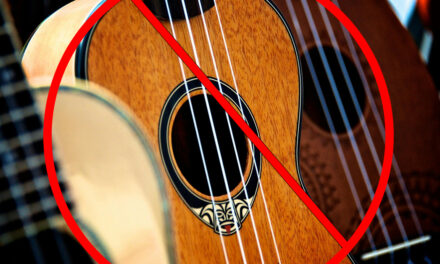There’s something special about the seventh chord. It feels like that warmth in the back of your throat when you sip hot chocolate on a cold winter night…
Or the jolt you get from a REALLY good jump scare in a slasher flick!
The seventh chord adds a little spice, a little warmth, a little tension, and a little novelty to your songwriting. So, in this post, I want to talk all about 7th chords: what they are, how they’re constructed, and of course, when to use 7th chords in your songs!
Improve your songwriting by mastering piano.
$49
ONLY
What Are Seventh Chords?
The seventh chord is a chord made up of a root note, a major or minor third, a fifth, and an additional note that’s a seventh interval above the root. This added seventh note creates a richer harmonic texture compared to triads (which are the more commonly-used chords built from only the root, third, and fifth).
In practical terms, the seventh chord adds a distinct sound with more color than the standard major and minor chords that you’ll hear 95% of the time in popular music. This gives you a lot more versatility in conveying emotional depth – it’s like having a dimmer switch where you can dial up (or down) the intensity of a particular chord sound.
Also, as you start venturing away from the Billboard Hot 100 into genres like blues, funk, R&B, and jazz, you’ll find that seventh chords (and even extended chords like the 9th or 13th) are essential in capturing the sound of that genre. Whatever your songwriting aspirations are, knowing 7th chords will help you write in virtually any genre!
Types of 7th Chords
Okay, so far, I’ve just talked about the seventh chord like it’s a monolith, but there are actually several different types of 7th chords.
These include the major 7th, minor 7th, dominant 7th, and diminished 7th, each with a distinct tonal quality depending on the intervals used to make it:
- Major 7th: Bright and smooth sound. Built with the root, major third, perfect fifth, and major seventh. Written as maj7.
- Minor 7th: More mellow and introspective. Built with the root, minor third, perfect fifth, and minor seventh. Written as min7 (or sometimes just m7).
- Dominant 7th: Tension-building, leading to resolution. Built with the root, minor third, perfect fifth, and minor seventh. Written as 7.
- Half-Diminished 7th: Adds dissonance and mystery. Built with the root, minor third, diminished fifth, and minor seventh. Written as m7♭5.
- Fully Diminished 7th: Intense tension, great for creating unease. Built with the root, minor third, diminished fifth, and diminished seventh. Written as dim7.
Now, let’s see how we can transform a standard C chord (like the one below)…
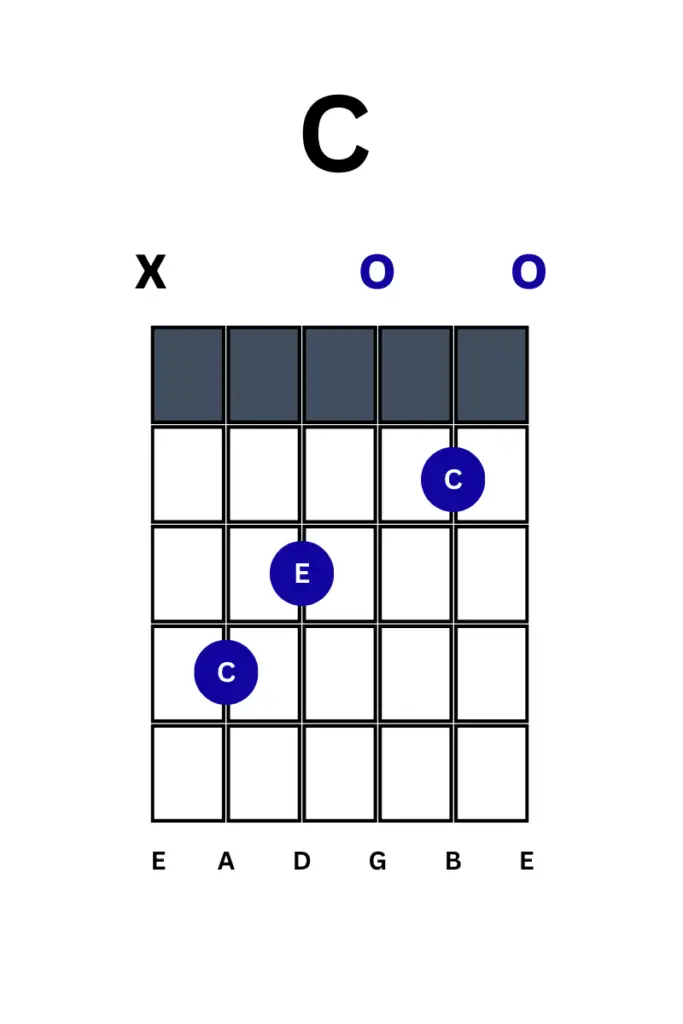
… Into each of THESE chords!
Cmaj7 – A C major triad with a major seventh (B) on top of it. The notes in Cmaj7 are C – E – G – B.
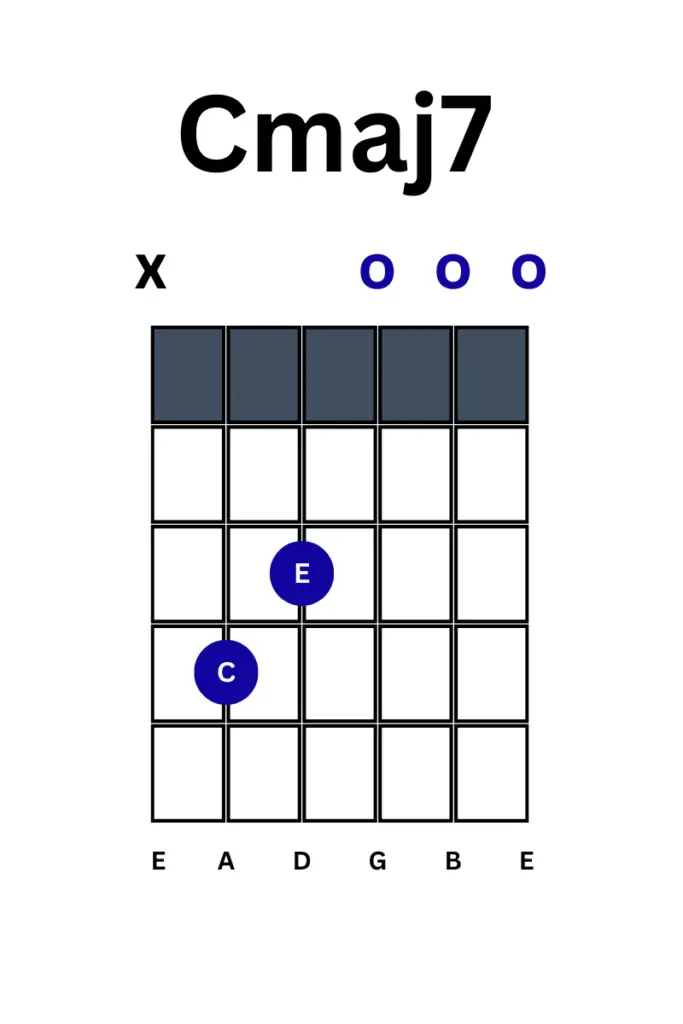
Cmin7 (or Cm7) – A C minor triad with a minor seventh (Bb) on top of it. The notes in Cmin7 are C – Eb – G – Bb.
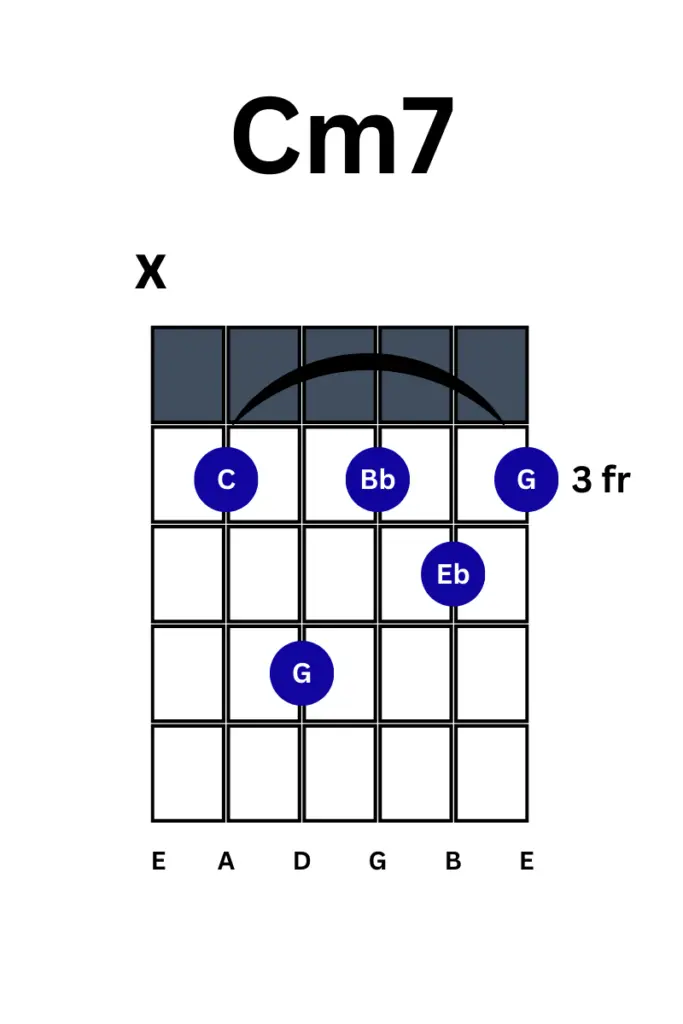
C7 – A C major triad with a minor seventh (Bb) on top of it. The notes in C7 are C – E – G – Bb.

Cm7b5 (or C min7 flat 5) – A diminished C triad with a major seventh (B) on top of it. The notes in Cm7b5 are C – Eb – Gb – Bb.
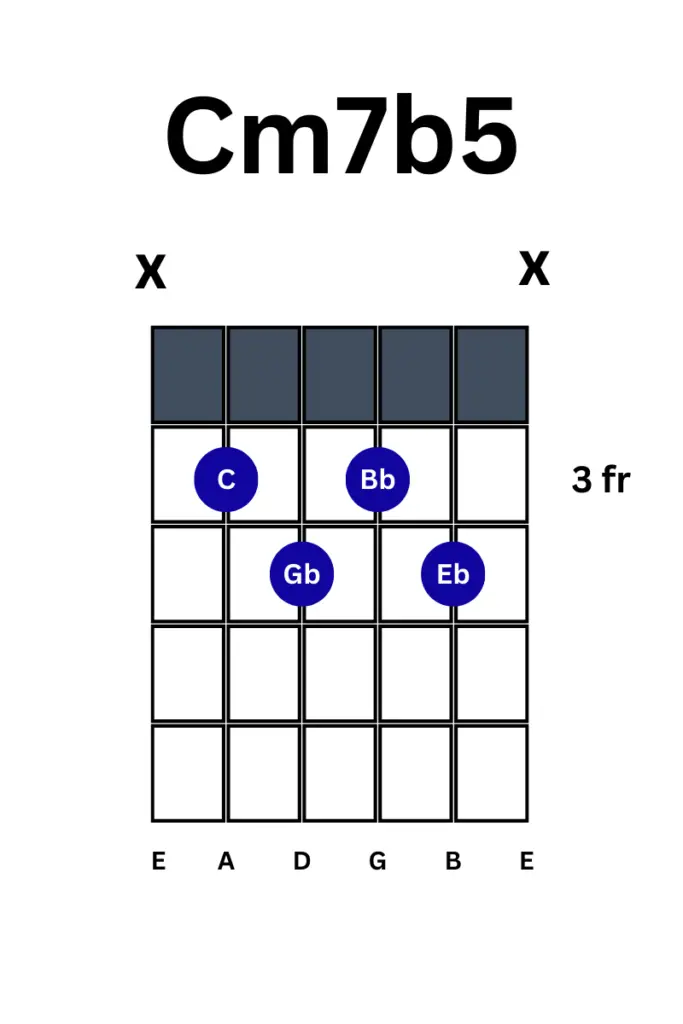
Cdim7 – A C major triad with a major seventh (B) on top of it. The notes in Cdim7 are C – Eb – Gb – A.
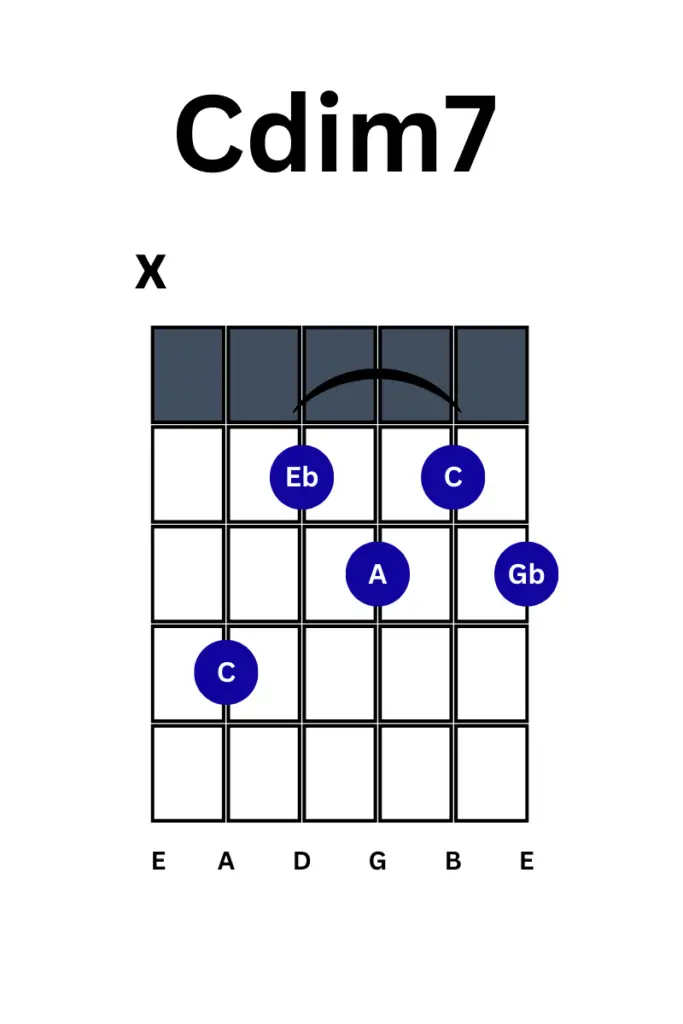
Quick reminder that whether you’re playing on piano, guitar, or any other instrument, each 7th chord consists of four specific notes – and those notes are allowed to repeat in any combination, such as two C’s in the C7 or two G’s in Cm7. The chord doesn’t change just because the same note shows up more than once!
Also, there may be times when you can omit certain notes in a 7th chord, such as the fifth in a dominant 7th – since the 7th note is so conspicuous, listeners will still pick up on the fact that it’s a seventh chord!
Okay, thanks for bearing with me! I know this was a lot of theory to throw at you, but I wanted to make sure we covered ALL of the seventh chords.
From here, we’ll focus on how you can use them (and what order to learn them in!).
Where to Use Seventh Chords in Your Song
We’ve touched on why you’d want to use 7th chords in your music at a high level – but now, let’s get into some specifics!
In Verses for Depth – Minor or major 7th chords in verses can make them feel more introspective.
In Pre-Choruses for Added Tension – Dominant or diminished 7ths can signal an emotional lift.
In Choruses for a Lift – Add richness to choruses by using major or dominant 7ths.
During Bridges – Use diminished 7ths to create a sudden break or change in the emotional tone of the song.
These are just a few ideas on how and where to use 7th chords as a songwriter, but the main advice I have for you is to experiment! Sometimes, the typical major or minor chord is perfect for your song, but if you’re ever writing and feel like it’s missing a little something, that’s your cue to see if a seventh chord might be just what your song needs!
Examples of Songs With Seventh Chords
When I first started learning guitar back in college, I took a well-trod path and learned some popular Oasis songs, including “Don’t Look Back in Anger” and (of course) “Wonderwall.”
These songs were some of my first forays into playing songs with 7th chords. In “Don’t Look Back in Anger,” there’s a dominant 7th doing a lot of heavy lifting: The E7 appears in the verse, the pre-chorus, AND the chorus… and it’s glorious. The song wouldn’t be the same without the surprise tension and emotional lift of an E7, especially because it technically functions as a chord outside the main key of the song (from C major to its relative, A minor).
I also played what was my first minor 7th chord on guitar with “Wonderwall,” with its opening Em7 (and its A7sus4 as well). It makes the song sound wistful to me – not quite sad, not quite happy. Using these seventh chords helps the song straddle that line between minor and major.
Obviously, there are countless artists and songs that use seventh chords, but I thought it could be interesting to share how I eased into learning seventh chords. In these songs, the occasional minor seventh or dominant seventh completely change the sound in a really compelling way!
With that said, here are a few other great examples of seventh chords in popular songs (by genre):
1) Jazz: “Autumn Leaves” – Nat King Cole
The song features a mix of minor 7th and major 7th chords that create the smooth, melancholic sound typical of jazz standards.
2) Blues: “The Thrill Is Gone” – B.B. King
The dominant 7th chords in this song give it a classic blues sound, particularly in how the tension of the 7th chords resolves throughout the progression.
3) Rock: “Don’t Look Back in Anger” – Oasis
Remember this one? The E7 chord in this song stands out for the tension it creates before resolving, adding emotional depth right before the chorus!
4) Pop: “Bennie and the Jets” – Elton John
The dominant 7th chords, particularly the G7, give this song its distinct groove and add a touch of sophistication to the upbeat pop structure.
5) Funk: “Superstition” – Stevie Wonder
The heavy use of dominant 7th chords in the song’s iconic riff gives it that funky, blues-inspired sound that makes it instantly recognizable.
6) R&B/Soul: “Ain’t No Sunshine” – Bill Withers
The use of minor 7th chords throughout gives the song its warm, soulful, and melancholic feel, complementing the lyrical themes.
7) Bossa Nova: “The Girl from Ipanema” – Antonio Carlos Jobim
Major 7th chords play a central role in this smooth, laid-back tune, typical of the Bossa Nova style.
8) Singer-Songwriter: “Fire and Rain” – James Taylor
The song features several major and minor 7th chords, which add to its reflective and emotional tone.
9) Baroque Pop: “God Only Knows” – The Beach Boys
This classic song features a Bm7b5 (B half-diminished) chord. The lush harmonies and sophisticated chord changes, including the half-diminished 7th, contribute to the song’s unique, emotionally rich sound.
10) Pop/Rock: “Michelle” – The Beatles
The fully diminished Bdim7 chord (B – D – F – Ab) appears in the song’s bridge, adding an unexpected shift and a touch of mystery to the romantic ballad.
If you’re a musician, I do recommend learning how to play some of your favorite songs, especially if they have interesting chords like 7th chords in them. This will help you get an intuitive feel for how 7th chords are used in music!
Tips for Songwriters: How to Incorporate 7th Chords
How do you actually incorporate 7th chords into your songs, especially if they’re still new to you?
Well, first of all, you could just experiment with what it sounds like to replace major or minor chords with seventh chords in the chord progressions you’re writing. Try swapping out a minor chord for a minor 7th, or a major chord for a major 7th or dominant 7th.
Now, if you’re deciding which ones to learn in terms of priority, here’s what I recommend:
- Start with the Dominant 7th – This is probably the 7th chord you’ll be most familiar with, especially if you’ve listened to any blues or rock music. The dominant 7th adds tension and it’s an important part of different cadences and progressions, because it sounds great leading into a resolution back to the root chord (i.e. V7 to I). Try adding a dominant 7th to your V chord in a basic progression (like G7 in the C-G-Am-F progression) and notice how it pulls back to the C.
- Move on to the Major 7th – Once you’re comfortable with the dominant 7th, introduce the major 7th chord into your music. The major 7th has a much smoother, dreamy quality, often used to soften up major chords. Use it when you want to add a touch of sophistication or jazz up a song. Try playing a Cmaj7 and notice the difference from a regular C major.
- Explore the Minor 7th – The minor 7th is great for adding a bit of introspection and warmth to your minor chords. It’s perfect for ballads, mellow verses, or anywhere you want to evoke a deeper emotional response. For instance, swap out an Am for an Am7 in your song and see how it changes the mood.
- Graduate to the Diminished 7ths – Ready to get a little adventurous? Half-diminished and fully diminished 7ths can add mystery and tension to your songwriting. They’re less common in mainstream pop, but they’re definitely amazing for creating mood shifts or adding surprise elements in your bridge or pre-chorus. Try them out when you want your song to take a turn in a new direction!
Wrap-up: Using 7th Chords to Elevate Your Songwriting
By incorporating 7th chords into your songwriting, you can add depth, emotion, and complexity to your music. Whether you’re experimenting with dominant, major, and minor 7ths, or bravely venturing into the mysterious world of half-diminished and fully diminished chords, these harmonies open up a world of creative possibilities for your songwriting.
If you’re truly interested in learning these chords inside and out, I would encourage you to develop your understanding of the piano. Piano is a fantastic tool for visualizing and playing advanced chords – not just 7ths, but also 11ths, 13ths, and suspended chords.
Personally, I’ve been expanding my own knowledge with Piano 4 All, and it has transformed the way I think about chord structure and harmony. Learning these advanced chords has deepened my understanding of 7th chords and unlocked new creative approaches to songwriting!
If you want to get better at writing memorable music that resonates, I recommend that you get familiar with an instrument like piano. The more you know about how great songs are constructed sonically, the easier it will be for you to create a masterpiece yourself. Check out Piano for All below to get started!
Improve your songwriting by mastering piano.
$49
ONLY
With that, I hope you enjoyed this guide to 7th chords! Try adding them to your songs and see how far they can take your songwriting. You’ll be in seventh heaven, for sure!
(For the record, I wanted to make a “7th Heaven” joke from the very start, but I managed to hold off until the end of article – so, you’re welcome!)

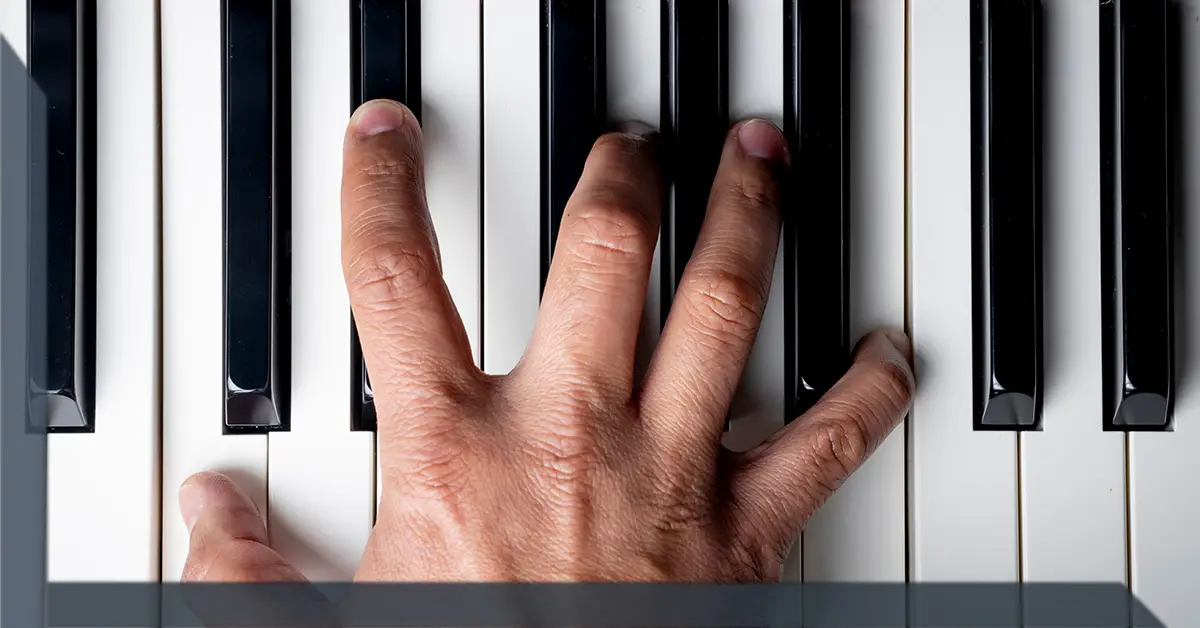
![How Long Does It Take to Write a Song? [Plus 3 Tips to Write Faster!]](https://improvesongwriting.com/wp-content/uploads/2021/09/How-long-does-it-take-to-write-a-song-2-440x264.jpg)
![Get Rid of Songwriter’s Block [With 5 Epic Songwriting Exercises for Writers!]](https://improvesongwriting.com/wp-content/uploads/2021/09/How-to-Get-Rid-of-Songwriters-Block-440x264.jpg)

